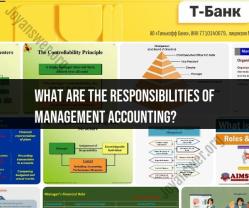How to pick and promote the most profitable products?
Selecting and promoting profitable products involves a combination of market research, strategic planning, and effective marketing strategies. Here are steps you can take to pick and promote the most profitable products:
Picking Profitable Products:
Market Research:
- Understand your target market. Conduct thorough market research to identify consumer needs, preferences, and trends. Analyze competitors to see what products are successful in the market.
Identify Niche Opportunities:
- Look for niche markets or untapped segments where there is a demand but less competition. Identifying and catering to specific needs can lead to profitability.
Product Viability:
- Assess the viability of products by considering factors such as production costs, potential profit margins, and scalability. Ensure that the chosen products align with your business model and goals.
Evaluate Trends:
- Stay informed about industry trends and consumer behavior. Products that align with current trends have a higher likelihood of success.
Customer Feedback:
- Gather feedback from your existing customers or conduct surveys to understand their needs and preferences. Customer input can guide product selection.
Test the Market:
- Consider piloting a product or conducting a limited release to test its market viability before a full-scale launch. This can help minimize risks and gauge consumer interest.
Promoting Profitable Products:
Build a Strong Brand:
- Invest in building a strong brand identity that resonates with your target audience. A recognizable and trustworthy brand can enhance the perceived value of your products.
Effective Product Positioning:
- Clearly communicate the unique selling propositions (USPs) of your products. Highlight what makes them stand out from competitors and why consumers should choose them.
Strategic Pricing:
- Set competitive and strategic pricing. Consider factors such as production costs, perceived value, and what the market will bear. Implement pricing strategies that align with your business objectives.
Multi-Channel Marketing:
- Utilize multiple marketing channels to reach a broader audience. This may include online platforms, social media, email marketing, traditional advertising, and more.
Content Marketing:
- Create compelling and informative content related to your products. This can include blog posts, videos, infographics, and social media content. Content marketing helps build brand authority and engages potential customers.
Influencer Marketing:
- Collaborate with influencers in your industry who can promote your products to their followers. Influencers can help increase brand visibility and credibility.
Customer Reviews and Testimonials:
- Encourage and showcase positive customer reviews and testimonials. Positive feedback serves as social proof and can influence potential customers.
Loyalty Programs:
- Implement loyalty programs to encourage repeat business. Offering discounts, exclusive access, or rewards for repeat purchases can enhance customer retention.
Partnerships and Collaborations:
- Explore partnerships with other brands or businesses that complement yours. Collaborative efforts can expand your reach and introduce your products to new audiences.
Optimize Online Presence:
- Ensure your online presence is optimized. This includes having a user-friendly website, utilizing search engine optimization (SEO) techniques, and maintaining active and engaging social media profiles.
Data Analytics:
- Use data analytics to track the performance of your marketing efforts. Analyzing data can provide insights into what strategies are working and where adjustments are needed.
Continuous Improvement:
- Regularly evaluate the performance of your products and marketing strategies. Be open to adapting and improving your approach based on market feedback and changing trends.
Remember that successful product selection and promotion involve ongoing efforts, adaptability, and a deep understanding of your target audience. Regularly reassess market conditions, consumer preferences, and the competitive landscape to stay ahead in your industry.
Identifying Profitable Products through Market Research and Data Analysis
Identifying profitable products is crucial for businesses to thrive in the competitive marketplace. Market research and data analysis play a pivotal role in this process by providing valuable insights into consumer trends, market demand, and potential product opportunities.
Market Research Strategies:
Conduct Thorough Market Research: Analyze industry reports, competitor strategies, and consumer surveys to understand market trends, target audiences, and unmet needs.
Identify Product Gaps: Analyze existing products in the market and identify gaps or areas where new products could fill unmet customer needs.
Evaluate Market Potential: Assess the size, growth potential, and profitability of potential product categories using market size data, industry trends, and competitor analysis.
Data Analysis Techniques:
Sales Data Analysis: Analyze historical sales data to identify top-selling products, customer preferences, and seasonal trends.
Customer Data Analysis: Analyze customer demographics, purchase history, and feedback to understand customer needs, preferences, and pain points.
Social Media Analysis: Analyze social media conversations, reviews, and trends to identify popular products, customer sentiment, and emerging trends.
Developing Effective Marketing Strategies for Product Promotion
Once you've identified profitable products, developing effective marketing strategies is essential to reach your target audience and drive sales.
Marketing Strategy Components:
Target Audience Identification: Clearly define your target audience, considering demographics, interests, and purchasing behaviors.
Unique Selling Proposition (USP): Develop a clear and compelling USP that differentiates your product from competitors and highlights its unique benefits.
Marketing Channels: Select appropriate marketing channels to reach your target audience, such as social media, email marketing, search engine optimization (SEO), content marketing, or influencer marketing.
Marketing Message: Craft a consistent and engaging marketing message that resonates with your target audience and effectively communicates your product's value proposition.
Marketing Campaign Planning: Develop a comprehensive marketing plan that outlines your marketing objectives, strategies, timelines, and budget.
Optimizing Pricing and Sales Tactics to Maximize Profitability
Pricing and sales tactics play a crucial role in maximizing profitability and ensuring product success.
Pricing Strategies:
Cost-Plus Pricing: Set a price based on the cost of goods sold (COGS) plus a desired profit margin.
Competitive Pricing: Analyze competitor pricing and position your product competitively within the market.
Value-Based Pricing: Set a price based on the perceived value your product offers to customers.
Sales Tactics:
Targeted Sales Efforts: Focus sales efforts on your most profitable customer segments and channels.
Effective Sales Techniques: Train your sales team on effective sales techniques, including building rapport, active listening, and handling customer objections.
Sales Incentives: Implement sales incentives to motivate your sales team and boost performance.
Customer Relationship Management (CRM): Utilize CRM software to track customer interactions, manage sales pipelines, and analyze sales data for improvement.












